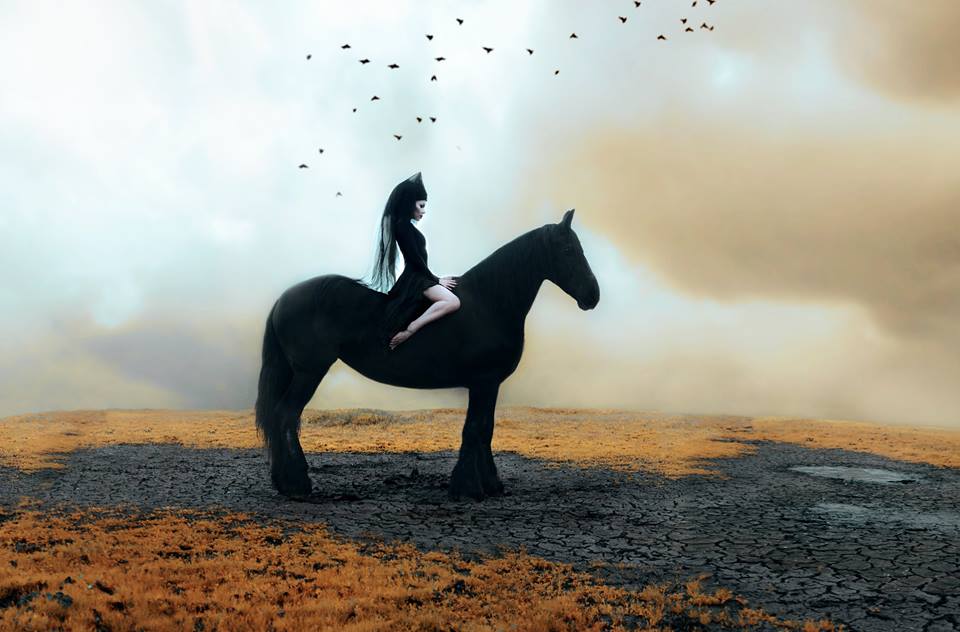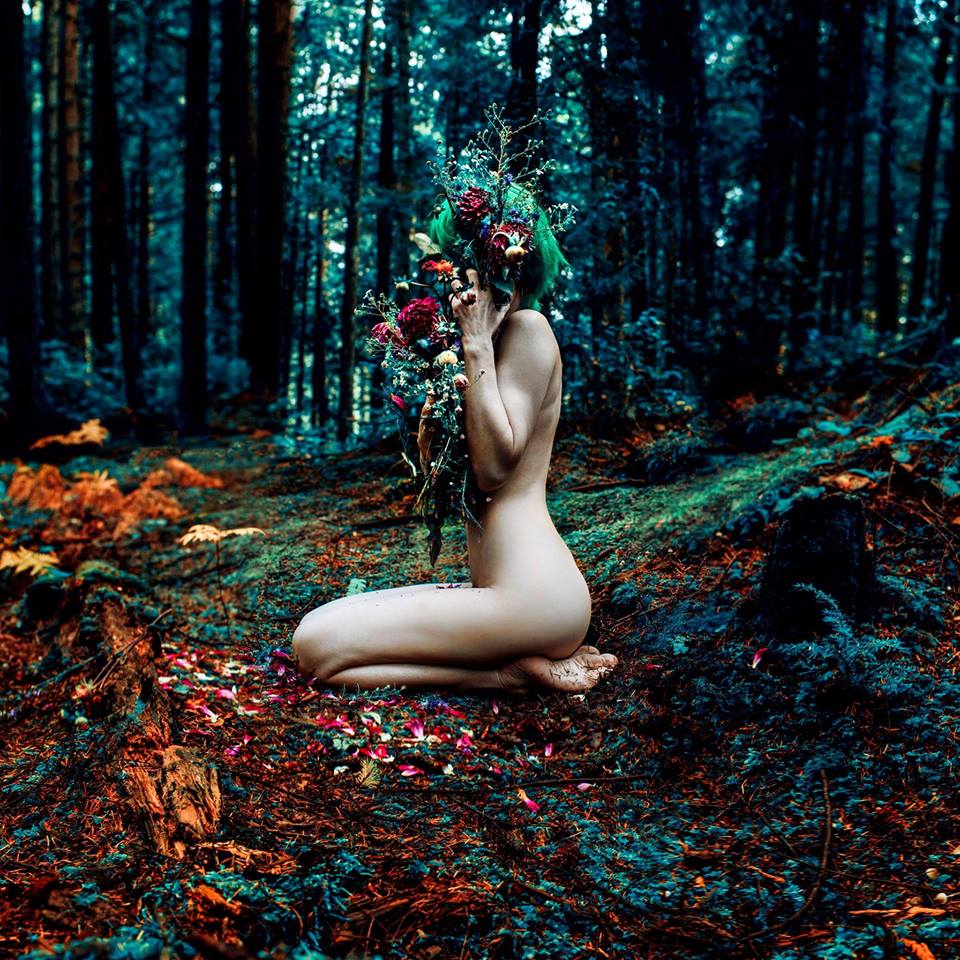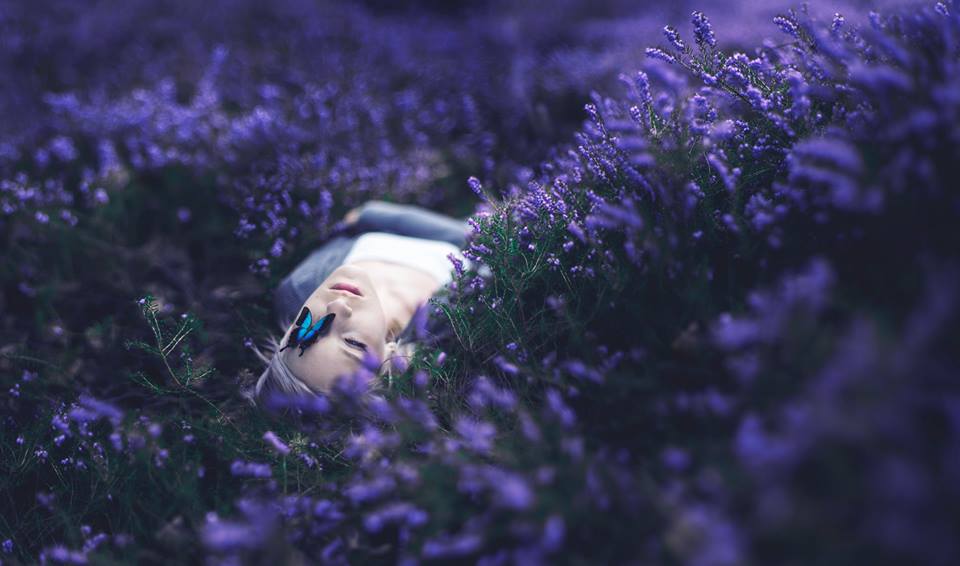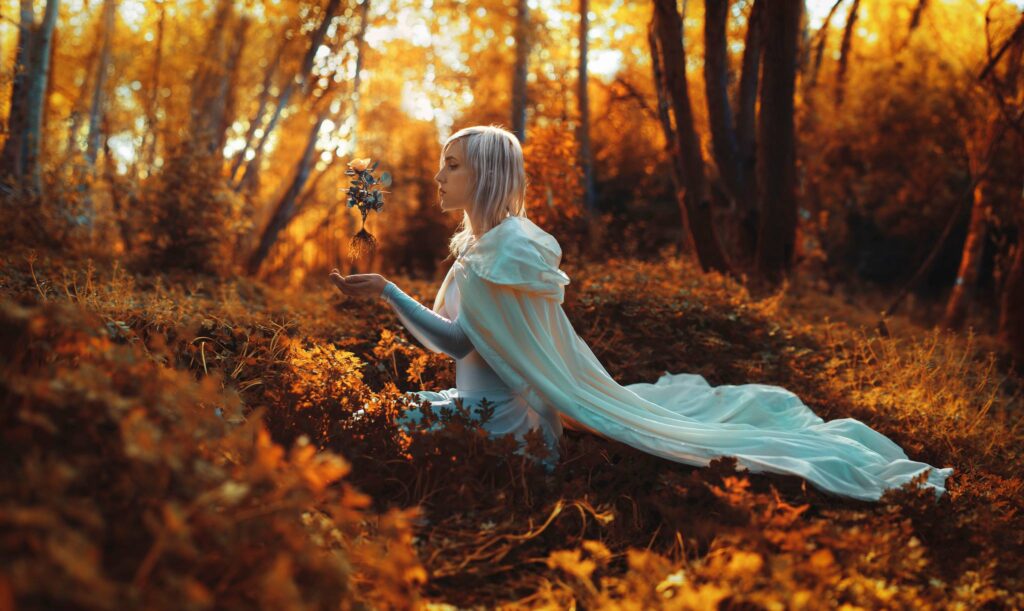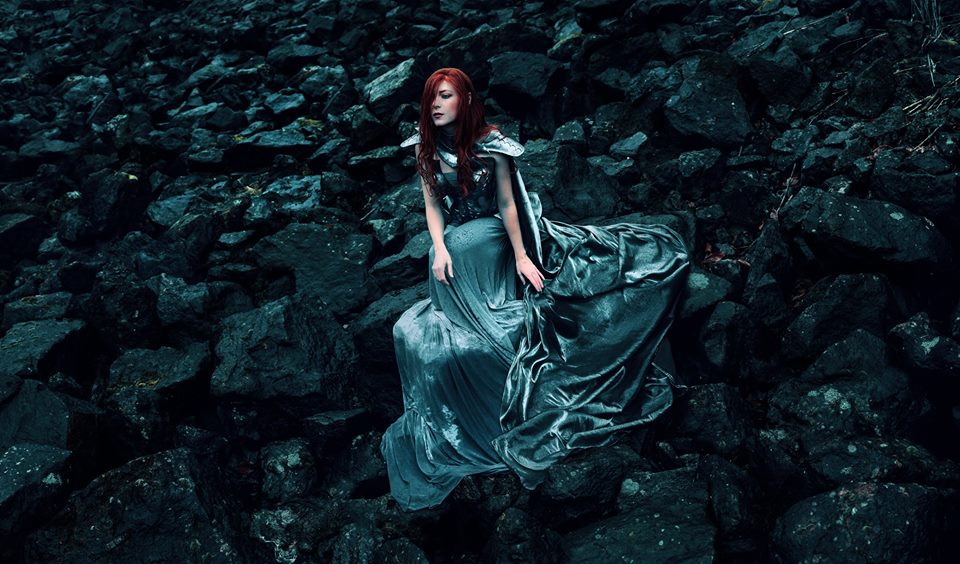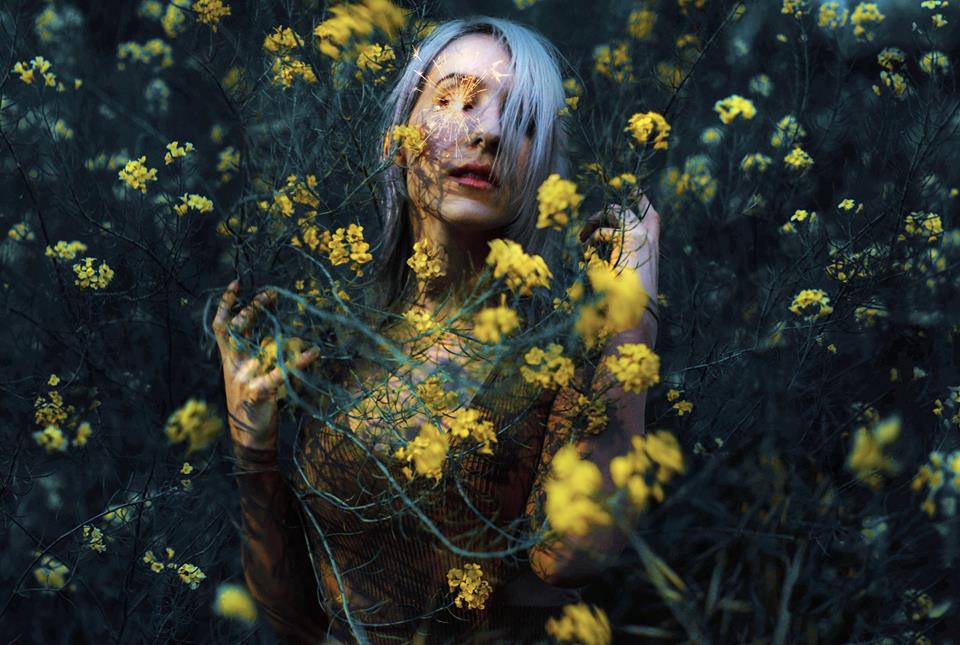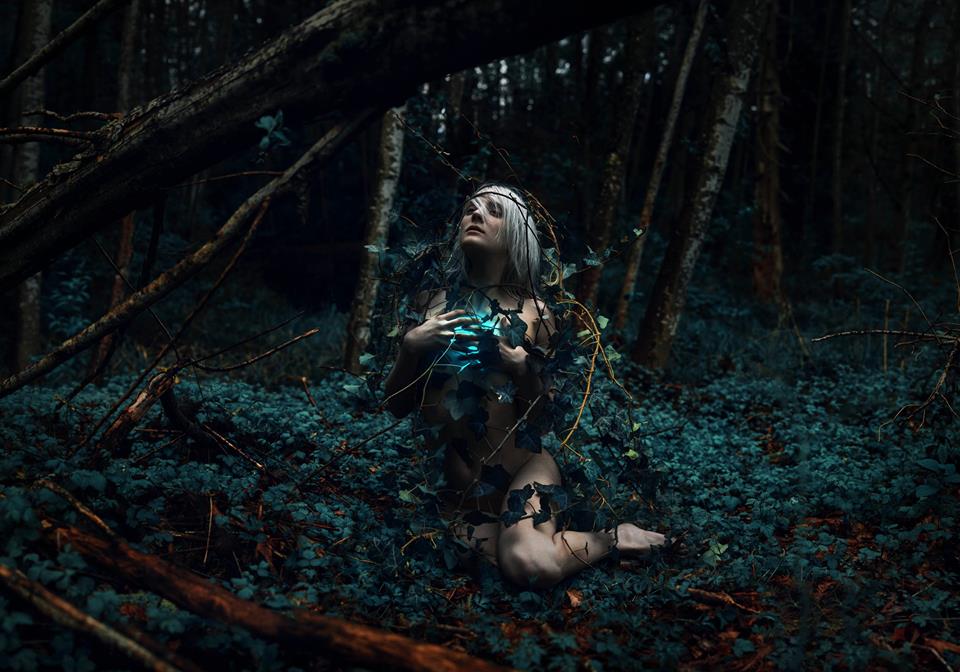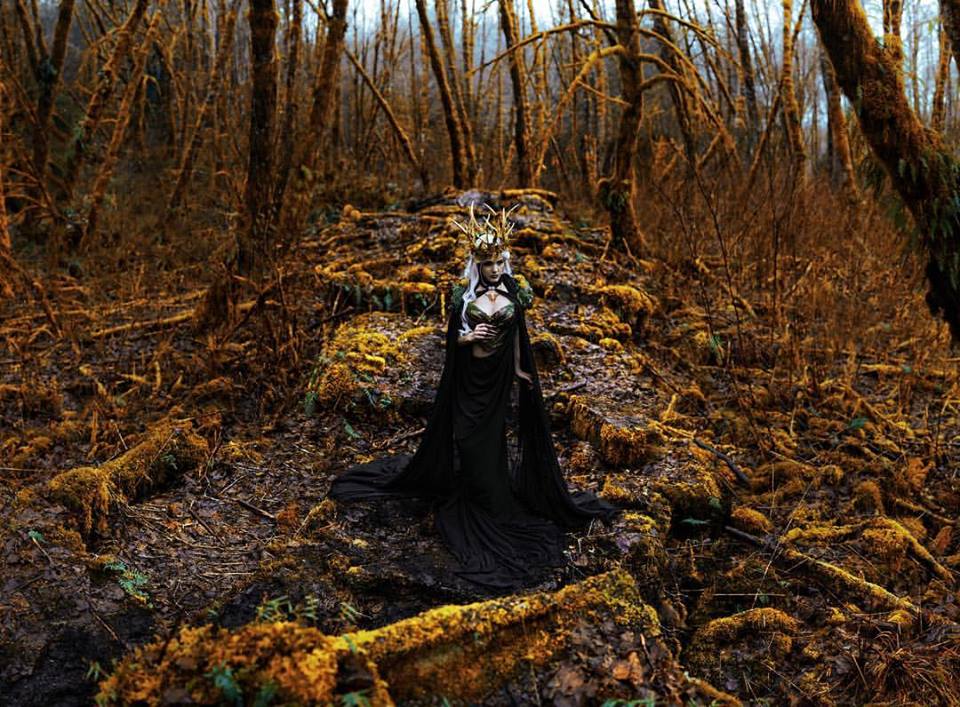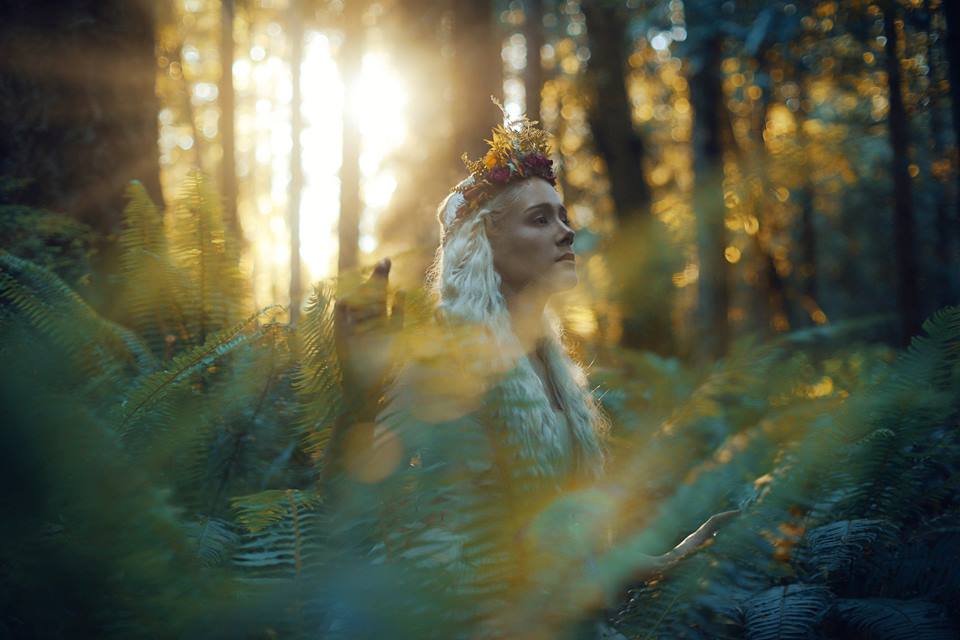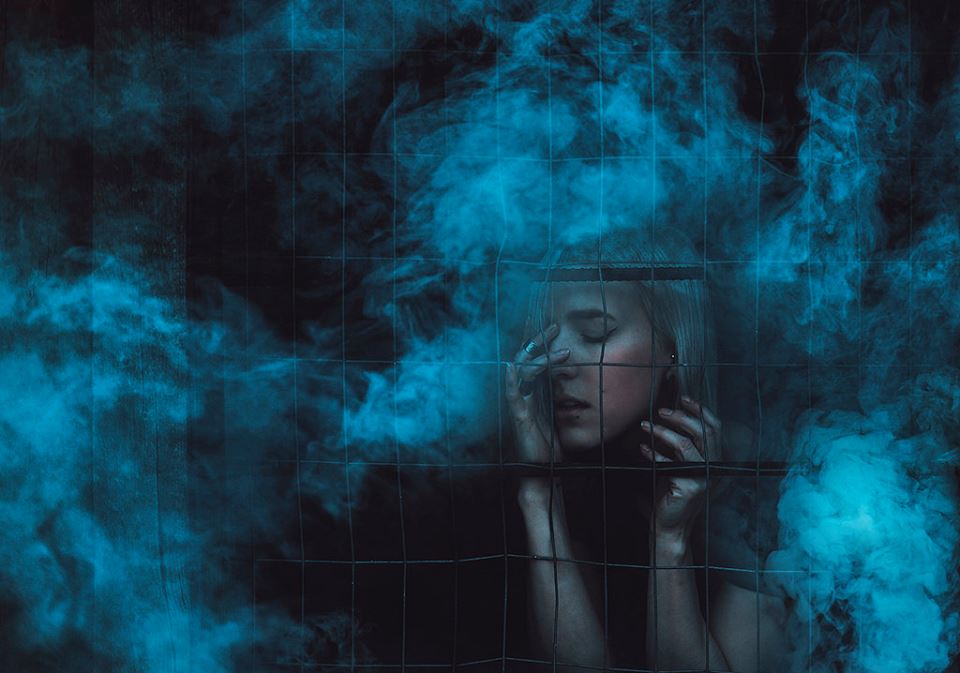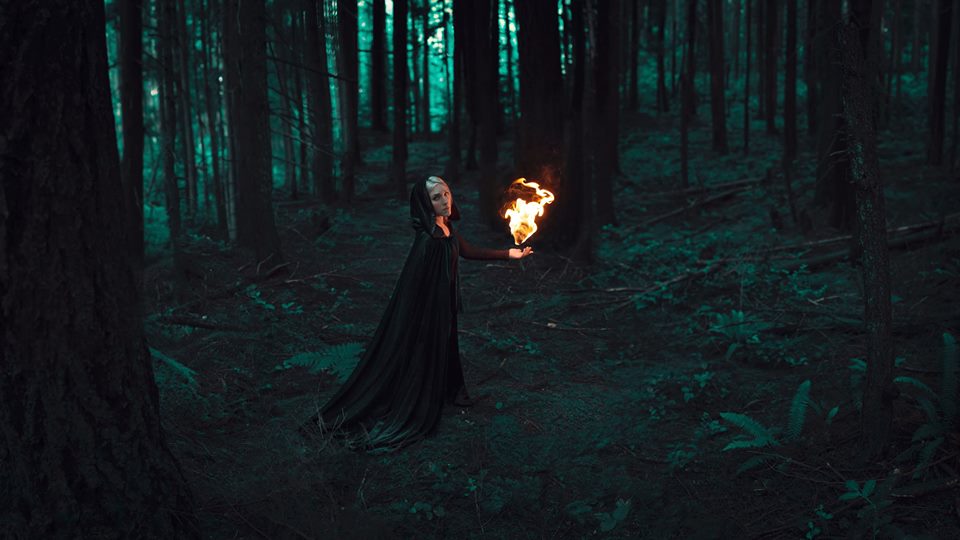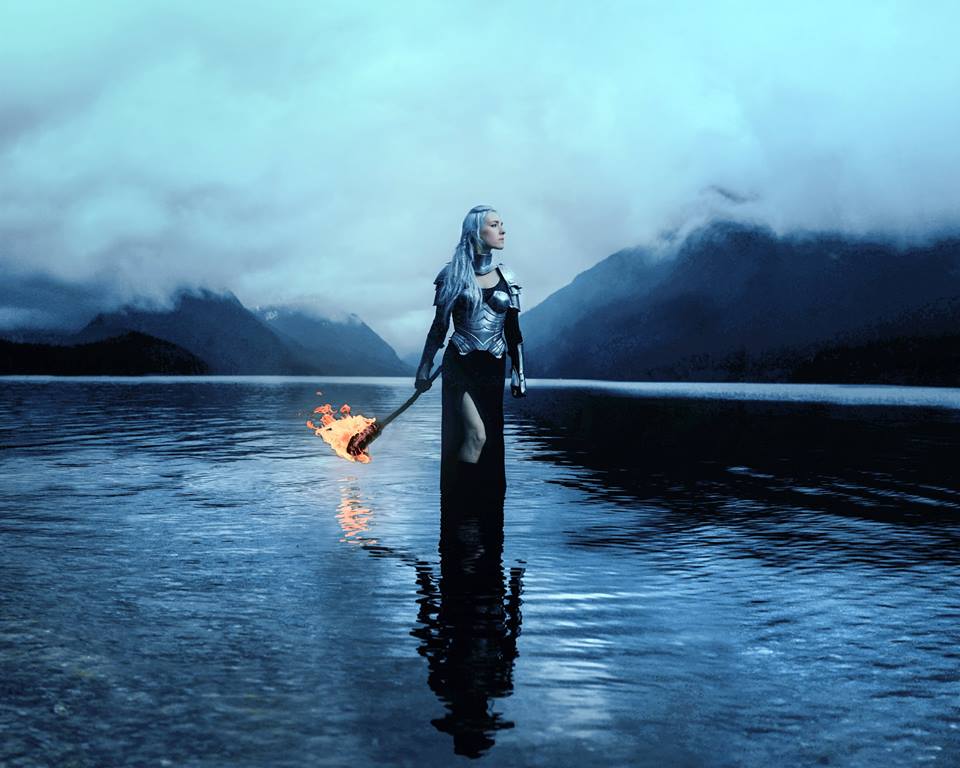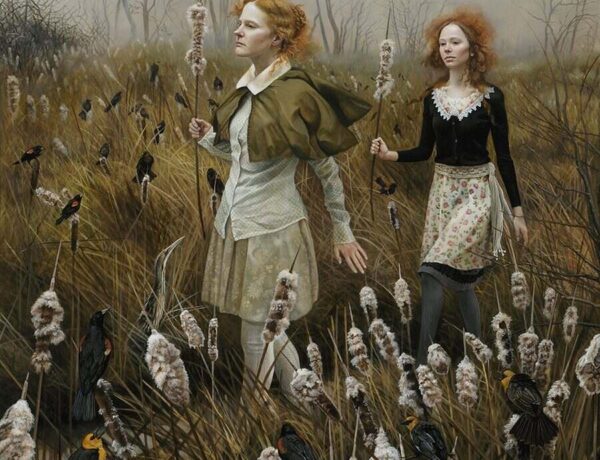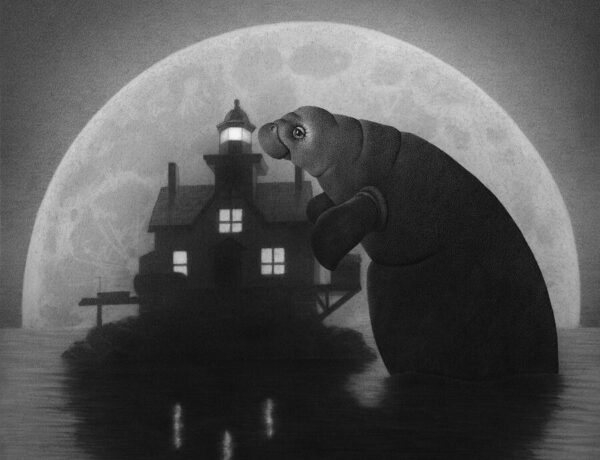For centuries, art has been inhabited by millions of heroines and heroes, but never with such an omnipresence and intensity as nature did. From paganism to man vs. nature themes, our planet, with its breathtaking sceneries, has always haunted human beings, and especially artists. They’ve made it the backdrop of their strokes of creativity. Kindra Nikole is playing her part in this human tribute to our environment. Deeply connected with forests and wildlife, the young artist offers a visual and emotional fusion with their immortal and maternal power. Her enchanting photography is reminding us that we are tightly tied to the vegetal and animal reigns. When we are alone, lost or distressed, if art is often the answer, nature is always the solution. Yet, she reminds us not to take this unconditional love for granted. In a world where we are craving for beauty and comfort, the pictures of Kindra Nikole are sending a vibrant message to humanity: way to happiness is through wilderness.
Facebook | Instagram | Flickr | Website
.
Your art is mixing a lot of fantasy and references to ancient worlds, can you tell me what have been your major influences both in your work and life?
I read—a LOT—as a kid, so much of my inspiration comes from those early years, hiding away in blanket forts with piles and piles of books around me. Mostly I read fantasy books or books with mythology from cultures all around the world, so I’m certain the influence you’re seeing in my work is a part of those formative years. Much of those things are fused into my character now—so much so that I hardly even notice it! In addition, I watched loads of films growing up. My favorites are mostly from the ‘80s, when special effects were used readily and really becoming refined. I’ve studied a lot of films from that era to help with ideas on how to execute tricky special effects in camera. I love the challenge of it, and I find that capturing as much in camera as possible makes the image that much more real.
I’m impressed by the texts which are often associated with your pictures on your social medias, they are really immersing your followers in both your playful process and your creative personality. As you already experiment with many arts (photo, painting, props designing, etc and even filmmaking!) I was wondering if you were also a writer or if you would consider creating stories to get deeper in the universes of your pictures?
Writing is a quiet yet very deep passion of mine. I organically began writing and sharing thoughts with my images as a way to help connect the viewer to my intent, or to allow them to get to know me on a more intimate level. Much of my work is emotive, so I often enjoy sharing the emotions and thought processes behind my pieces.
I’ve written for a few select art magazines, and I’ve even written short stories for some of my works. Neráidos is a good example of that—it’s a piece I made for Antler Gallery’s annual Unnatural Histories show. The artist is asked to create an imaginary creature and then write an excerpt for said creature. I had such a blast with that!
I certainly intend to continue exploring more and more mediums, and I think over time, writing, photography, prop building, filmmaking, and painting will all meld together for me into something much more. That’s the hope, at least! I have big goals and dreams, and a thirst for always expanding, learning, and experimenting. We’ll see where it leads.
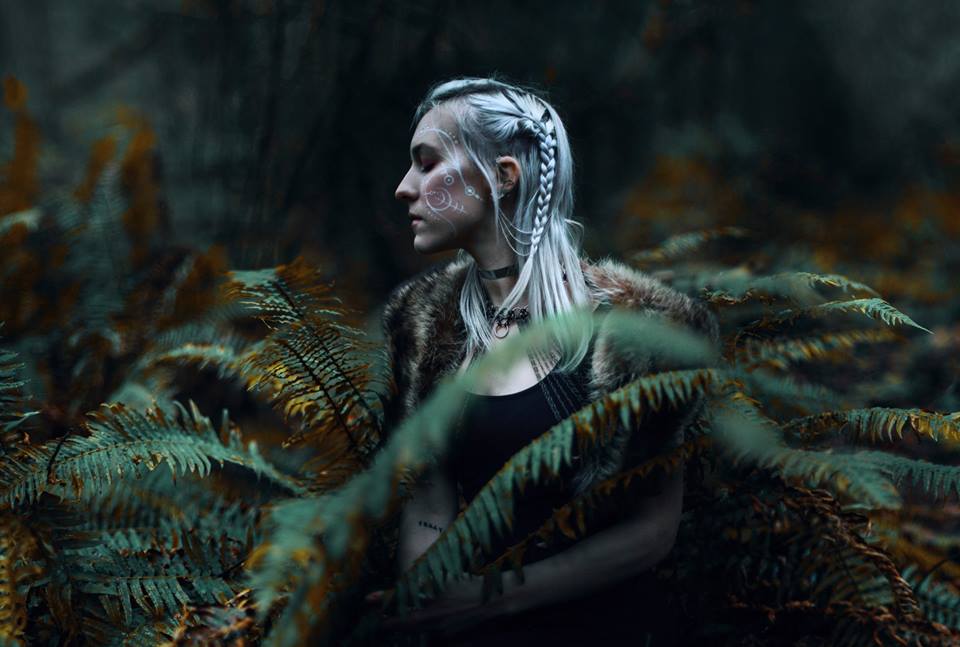
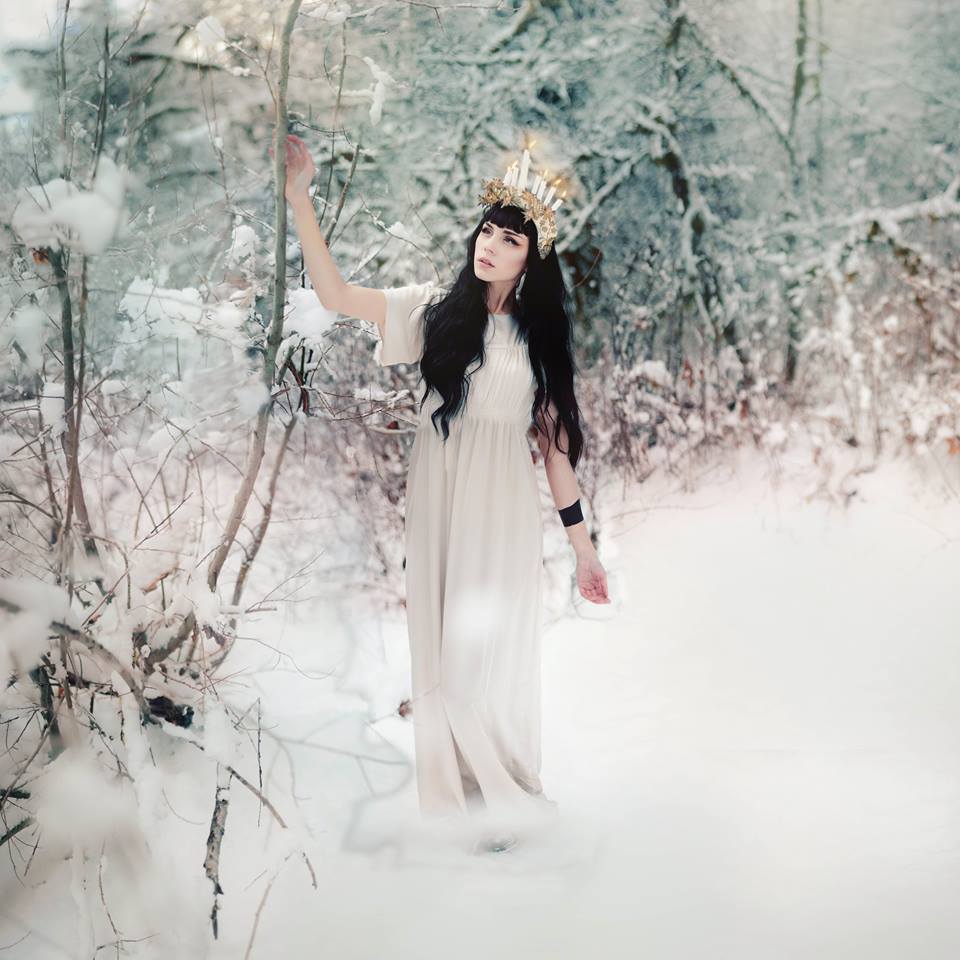
Talking about your many talents, could you describe your process and how you’re building a finished artwork with all your skills?
My process can vary pretty drastically from piece to piece. For self-portraits, it’s more of a therapy than anything else—an outlet and way for me to work through things I’m experiencing in my life and things that have already passed. So I typically work solo and keep the production side of things fairly minimal. Things tend to get…crazy, shall we say, for my larger productions involving other models, props, and elaborate costumes.
I shoot almost exclusively outdoors, which presents some unique challenges, particularly in the Pacific Northwest, where the weather can be very unpredictable. You can have as many as five seasons in one day here! I do my best to capture as much in camera as possible, which can mean a lot of creativity on set. Once I have the images, I typically narrow down a set of over a hundred shots to just one image, which I then set to work editing. My editing process can take anywhere from a couple hours to a few weeks. Sometimes I find it helpful to spend a few hours in the evenings over the course of a few weeks to get the image where I need it to be.
As for my physical works, I then print the completed image onto fine-art archival paper, mount it to a hand-stained wood panel, prime it, embellish it with acrylics, and resin glaze it. I’ve fallen completely in love with the luster and sheen of resin—it’s like glass. It looks so beautiful and I feel helps create a physical piece indicative of my overall tone of work.
Do you have other short films in the making?
Currently I have two big ideas for some short films I want to work on, but both are in their fledgling states. I don’t want to give away too much, since it’s still so early, but one focuses on the evolution from being a preteen into adulthood as a female, and the other focuses on humanity’s disconnection from nature. Film is something I know I will dive more and more into over the years, but it requires a great deal of energy and coordination, so I’m easing myself slowly into the waters. I can’t wait to make more moving images, though—there’s something so exhilarating about being able to communicate in that way to viewers.
Looking back to your career, how would you describe your evolution, both in terms of technique, themes and creativity?
Oh goodness, that’s a tough one! It’s been a unique and bumpy road for me. As a child, you wouldn’t find me without a pencil and paper in hand. I was always drawing and imagined myself as an illustrator of some sort as an adult. I hit some difficult life patches between my teen years and early twenties, and for the better part of a decade, I dropped art entirely. It is and has always been such an integral part of who I am that I felt very lost for a long time.
Then one day I splurged and bought a used camera for a couple hundred bucks. I’d taken a photography course in high school, so I had the basics, but no formal training aside from that. I figured why not—maybe it’d be fun? I decided to commit to a 365 project (a project in which a person shoots and shares an image every day for a year), something I’d seen a lot of people doing as a trend of sorts at the time. Over the course of a year and a half, what began as a fun side project became an all-consuming obsession. I had hit a creative vein in myself that had been so long neglected, that the ideas just came pouring out.
The technique took time to catch up, but slowly, bit by bit, day by day, I found myself again. Dedicating hours upon hours into my process, I taught myself what worked and what didn’t. And because it was a project I was doing only for myself, I had a playful approach that created a fertile environment for growth. I missed a day or two here or there, but there was not a single day that went by when I wasn’t actively planning my next shoot and thinking obsessively about the technicalities of that shoot, or new ways to edit it, or new crazy ideas I wanted to explore. It was a wild ride, and I had no idea committing to that project would end with me where I am now. Which is to say, an artist who will never allow herself to shelve her creativity again. Not while I’m still breathing.
The presences of nature and of your mother are strong in your process, and it’s difficult not to make a link between them in term of allegory. Putting it in parallel with the solitary figures in your photos, do you think it could express a gap or a nostalgia of the mother figure or even intrauterine peace?
That’s certainly possible. I pick and choose when to help guide the viewer with excerpts I include with my pieces as opposed to letting the image speak on its own. I think part of the magic is leaving things open to interpretation from time to time.
That said, nature has always been an integral part of who I am and is, by necessity, an integral part of my work. I have a deep, profound respect and love of nature and spend as much time in the outdoors as I’m able to. I spent countless hours clambering up trees and romping through forests as a child. I’m happy that my love of nature is so readily apparent in my work.
As for my mother, she was and still is a very deep influence on me artistically. She always pushed me to explore my creativity, and she herself was incredibly creative and driven. Anything I’ve done is a reflection of what she instilled in me at a very young age, which included reading to me plenty when I was little, and taking me on frequent trips to the library.
In regards to the solitary figures, I’d like for viewers to take away what they will. However, I will say that I spent a lot of time as a child and teenager on my own, and I learned how to find solace and comfort in the presence of myself. I believe that if people can find peace in the solitude of themselves, they can find a deep well of strength and fortitude. I hope that my pieces reflect that strength, in their solitude.
Your pictures are a balanced mix of darkness and energy: in which way does your art allowed you to overcome your loss and fear in your life?
My imagery emerges pretty organically—I don’t really choose when an image is more energetic than dark, and vice versa. Each aspect is the flip side of the same coin, and each side has helped me to deal with loss and fear in their own unique ways. The energetic side of my work is a retort to the darkness: I embrace the light and revel in the buoyancy of my lighter days. I encourage positivity and create work that finds delight in the beauty of a light heart.
On the flip side, my darker imagery is my answer to that which so many of us fear in life, namely, death. I think there is true beauty in the dark, and to face it head on, and boldly, acknowledging its presence while also respecting it, is so important. From death emerges new life, from dark, light. It’s a stunning thing, even if we’re conditioned to be uncomfortable with it.
There’s a fine line between exploring darkness in work and going overboard with it, and I do my best to tow that line. Validating the darkness within myself by nodding to my fears and reservations has been one of the most liberating practices of my art. The world is not black and white but rather myriad shades of grey, and I hope to speak to that in my work, always.
Nature sometimes seems to be the main heroine of your pictures instead of the model. What kind of bond do you (and your work) have with nature, both all along your career and in today’s creativity?
It’s true that nature often steals the scene in my images, and that’s usually by design. I have had a deep love affair with nature since childhood. It has been the single, solitary thing that brings me peace no matter how distraught I might feel. In many regards, nature has been a soothing balm and even a stand-in parent for me throughout the years.
Over time, I have felt more and more saddened by the state of the world and our treatment of nature, as a species. As technology advances, we disconnect more and more from the earth beneath our feet and the wind on our faces. And there’s something very tragic and even frightening about that to me. It’s always my hope that my work reminds the viewer of our inherent connectedness to the planet. Even though we move freely about, unlike trees, and we regard ourselves as evolved beyond most other species, it’s important to remember our deep roots. We are no greater than the trees and no less than the stars. Right now, we have one planet that we are capable of surviving upon. And it IS up to us to undo or stabilize the damage we’ve done and are doing, and to find a way to truly live in harmony with our one true home.
Is your art reflecting an ideal of life or is it a visual mantra (especially for the fearless heroines) or is it the expression of the happiness you have found in your personal life?
I think my art is many things… it’s often an escape from reality, or rather, a reflection of a reality I want to be a part of, that I want to make real. It’s my way of making sense of a world that frequently makes no sense to me. I’ve spent the majority of my life feeling very alienated from the world at large, which is both freeing and terribly lonely.
There’s certainly an aspect that is a visual mantra. I want women to feel empowered. I want them to know that they are unstoppable, unshakable, and that no matter what the world throws at them, they aren’t alone. There’s always that underlying tone in my work.
I have moments of happiness, but I don’t actually think happiness is a state that one can embody for too long a time. As with all things, it’s fleeting, and often we cling to this ideal that that’s the perfect state that happiness is where we should strive to always be. But there’s a beauty in sorrow, in anger, in loss. One emotion enriches another, and they all further our experiences here on this crazy, amazing planet.
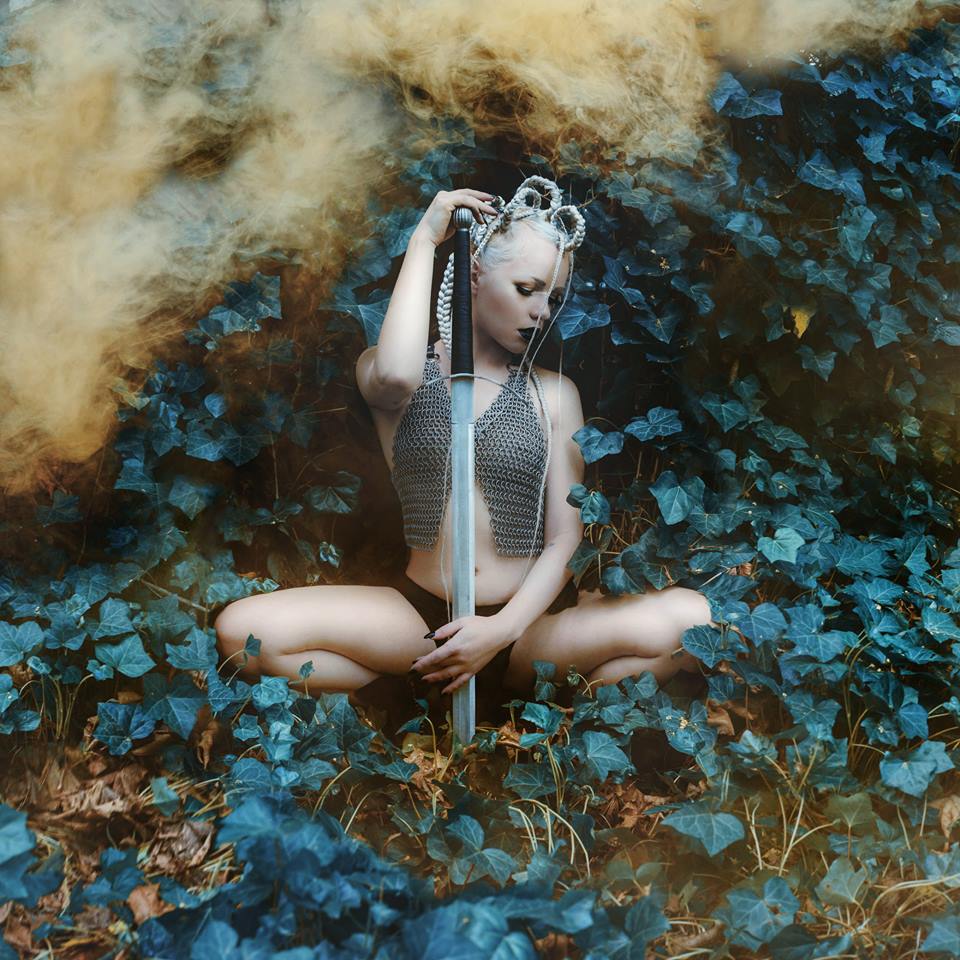
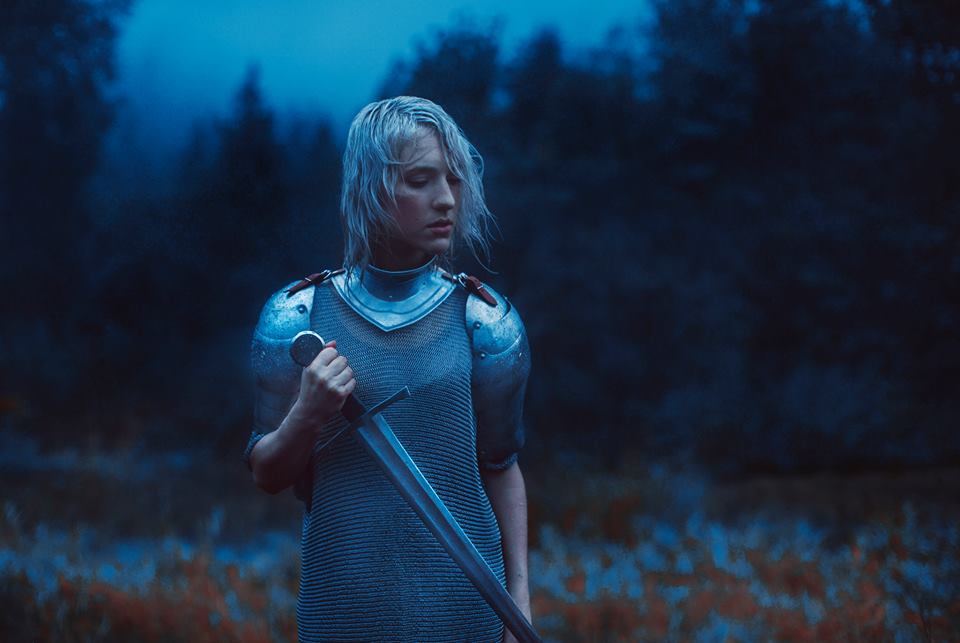
Do you have projects in the near future?
I sure do! Currently I’m working on my very first triptych for a connected series of pieces for Modern Eden’s upcoming group show, Flower Child, in August. I’ll be exploring themes I haven’t directly touched on before, with a hint of psychedelia.
I’m also working on a very cool collaboration with Redd Walitzki, an incredible artist who I had the sheer delight of traveling to Iceland with in June of 2016. She and I rented a camper and drove the Ring Road together, taking photos of our experiences as we traveled. We’re currently working on a book with a marriage of our works pulled from our experiences in Iceland, and I’m so excited to see it come together.
I’ve also got a script sorted out for another short film and am hoping to collaborate with my dear friend Cassie Meder, who is herself always making beautiful work that is different from my own, which tends to create a fun and interesting challenge for the two of us.
Farther ahead, I’m planning to begin dabbling in a larger body of work exploring some new themes…but I don’t want to give too much away. Let’s just say it touches on ancient mysticism and dives pretty deep into the dark end of the ocean for me.




